May
23
2022
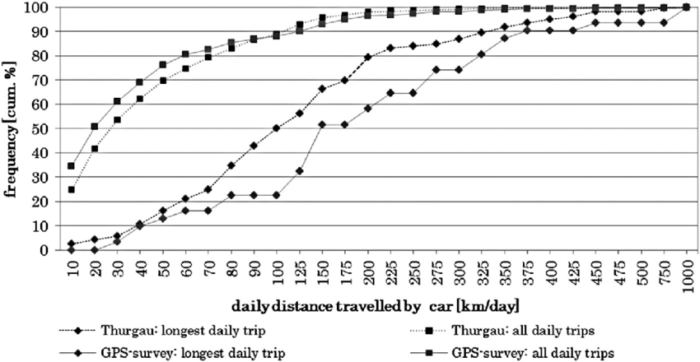 Demand for electric vehicles (EVs) is increasing, but still there is lingering hesitancy to make the switch to EVs. Sales of EVs have been increasing geometrically over the last decade, with global sales reaching 6.6 million in 2021, compared to 66.7 million total vehicles sold. While this trend is encouraging, there is still a long way to go and the global warming clock is ticking. So what barriers remain to more complete adoption of EVs?
Demand for electric vehicles (EVs) is increasing, but still there is lingering hesitancy to make the switch to EVs. Sales of EVs have been increasing geometrically over the last decade, with global sales reaching 6.6 million in 2021, compared to 66.7 million total vehicles sold. While this trend is encouraging, there is still a long way to go and the global warming clock is ticking. So what barriers remain to more complete adoption of EVs?
Up front cost is still an issue, but this has been largely mitigated by the availability of more EV options that are in the range of comparable internal combustion engine (ICE) vehicles. Also the total cost of owning an EV is cheaper. According to a 2020 analysis:
For all EVs analyzed, the lifetime ownership costs were many thousands of dollars lower than all comparable ICE vehicles’ costs, with most EVs offering savings of between $6,000 and $10,000. While new EVs were found to offer significant cost savings over comparable ICE vehicles, the cost savings of 5- to 7-year-old used EVs was found to be two or three times larger on a percentage savings basis.
That was also before the recent spike in gasoline prices, and such spikes are not rare and likely to happen during the course of owning an EV. I wrote recently about the local health benefits of reducing pollution. I own an EV and I can also attest to other practical benefits. The driving performance is excellent, better than any ICE car I have driven. I can “fill up” at home and never have to take the car to a gas station. There is also limited routine maintenance – no oil changes or all the other things that go with an ICE. Because of regenerative braking the brake pads also last much longer. The tires are really the only thing that require attention. It is simply a superior car-owning and driving experience, and the money saving is nice.
Continue Reading »
May
19
2022
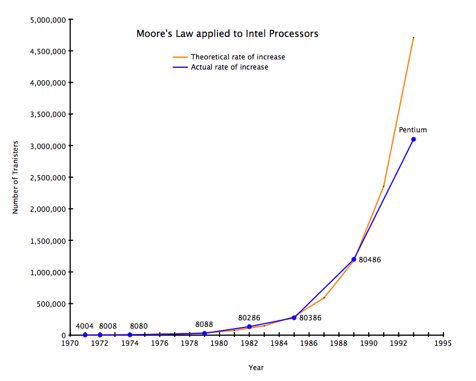 Having a working understanding of the biases and heuristics that our brains use to make sense of the world is critical to neuropsychological humility and metacognition. They also help use make better sense of the world, and therefore make better decisions. Here’s a fun example. Let’s say you increase your driving speed from 40 mph to 60 mph over a 100 mile journey. How much would you need to increase your speed from a starting point of 80 mph in order to save the same amount of time on the journey? Is it 100 mph or 120 mph?
Having a working understanding of the biases and heuristics that our brains use to make sense of the world is critical to neuropsychological humility and metacognition. They also help use make better sense of the world, and therefore make better decisions. Here’s a fun example. Let’s say you increase your driving speed from 40 mph to 60 mph over a 100 mile journey. How much would you need to increase your speed from a starting point of 80 mph in order to save the same amount of time on the journey? Is it 100 mph or 120 mph?
Many people follow the linear bias, the false assumption that most systems follow a linear path. It is an interesting question as to why this bias is so deeply rooted in human psychology, but research shows that it is. Others may follow the ratio heuristic, and consider that 60 mph is 50% more than 40 mph so you would have to increase your speed to 120 mph to get the same 50% increase. But this too is wrong. The real answer is 240 mph. Do the math for yourself. While the ratio heuristic seems more reasonable, in this context it fails because you are not considering the fact that at higher speeds the overall trip time is less and therefore the potential time saving is also less.
When the linear and ratio biases are applied to time, in fact, psychologists refer to this as the time-saving bias. We tend to underestimate how much time we can save when starting at a slow speed and vastly overestimate time saving when starting at a relatively high speed. This bias applies to more than just driving, but also to any task. We feel that if we push our speed or efficiency higher, there will be substantial gains, but there usually isn’t. At the same time, we need to realize that bottlenecks where speed is very low present an opportunity for significant increases in efficiency. We know this, but we still tend to underestimate its effects, especially relative to increasing already high speeds.
So in any operation, whether driving on a journey, completing a task at work, or maximizing the efficiency of a factory, it is best to focus on the slowest components. There is significantly diminishing returns when improving already fast processes, and they are probably not worth it.
Continue Reading »
May
12
2022
 The healing potential of stem cells came to the public consciousness in 2001, when president George Bush banned federal funding for any research involving new embryonic stem cell lines. This sparked a public and professional debate, with proponents touting the amazing potential of stem cells to cure serious diseases, with Alzheimer’s and Parkinson’s frequently mentioned as examples. Critics were worried about the harvesting of human embryos to fuel this research. Bush’s ban was meant to be a compromise, allowing research on existing stem cell lines but banning the creation of new lines. But in practice it was a thorough ban, because existing lines were limited, and also the ban was applied to all federal funding of an entire institution in which any lab was involved in prohibited research. The US likely lost a decade of stem cell research as a result.
The healing potential of stem cells came to the public consciousness in 2001, when president George Bush banned federal funding for any research involving new embryonic stem cell lines. This sparked a public and professional debate, with proponents touting the amazing potential of stem cells to cure serious diseases, with Alzheimer’s and Parkinson’s frequently mentioned as examples. Critics were worried about the harvesting of human embryos to fuel this research. Bush’s ban was meant to be a compromise, allowing research on existing stem cell lines but banning the creation of new lines. But in practice it was a thorough ban, because existing lines were limited, and also the ban was applied to all federal funding of an entire institution in which any lab was involved in prohibited research. The US likely lost a decade of stem cell research as a result.
The Bush ban was reversed by Obama in 2009. Perhaps more importantly, starting in 2007 scientists were publishing research showing how to turn adult cells into pluripotent stem cells. These are not quite as good as embryonic stem cells, which are totipotent (pluripotent can turn into any type of cell in the body, while totipotent can turn into any cell type, including placental cells). But they are close, and also are extremely useful. Over the next decade this research continued, finding new and easier ways to program adult cells into pluripotent stem cells, called “induced” pluripotent stem cells (iPSC). These cells also have a potential advantage – they can be harvested from a person for use in that person, and therefore eliminates the issue of rejection.
Throughout the last two decades, despite the ban, stem cells have been hyped as a potential cure-all, the ability to replace or regenerate tissue and outright cure even the worst degenerative diseases. But reality has not lived up to the hype. There are many technical hurdles to using stem cells in this way – they have to survive and even thrive, take up their desired function, form anatomical structures or connections to other cells, and not form into tumors. That last bit has been a huge barrier to their therapeutic use.
Continue Reading »
Mar
07
2022
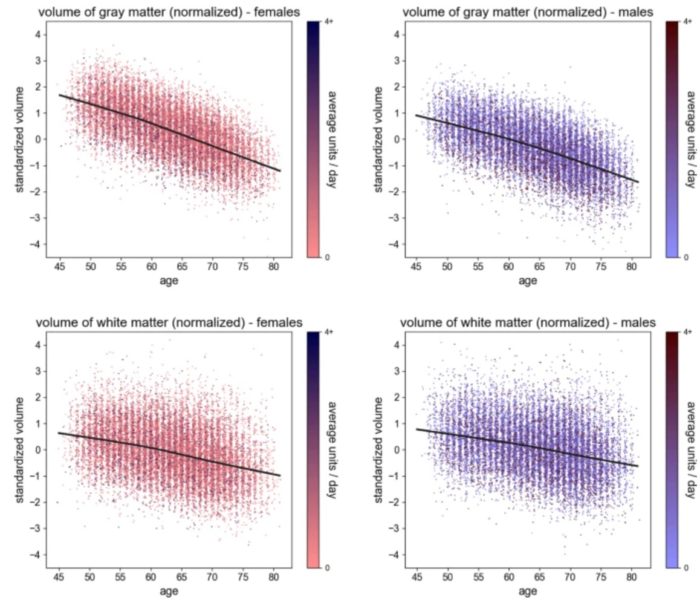 The dose makes the poison, so anything is potentially a poison in a high enough dose and safe in a low enough dose. But we generally refer to substances as poisons or poisonous if they cause significantly negative or dangerous biological effects at typically encountered doses. By this practical definition, alcohol is a poison. When you are tipsy or drunk what you are experiencing is alcohol’s poisonous effect on the functioning of your brain. The acute effect of alcohol is to inhibit neuronal firing, thereby depressing brain function. Even after one drink, these effects can be measured in reduced reaction time and cognitive function.
The dose makes the poison, so anything is potentially a poison in a high enough dose and safe in a low enough dose. But we generally refer to substances as poisons or poisonous if they cause significantly negative or dangerous biological effects at typically encountered doses. By this practical definition, alcohol is a poison. When you are tipsy or drunk what you are experiencing is alcohol’s poisonous effect on the functioning of your brain. The acute effect of alcohol is to inhibit neuronal firing, thereby depressing brain function. Even after one drink, these effects can be measured in reduced reaction time and cognitive function.
There has long been a scientific question, however, as to how much of a long term damaging effect alcohol has on the brain. It’s possible that it acutely inhibits neuronal firing, but once out of your system, function returns to normal and no harm done. There is a great deal of scientific research on this question, which has well-established that chronic heavy alcohol use causes damage to the brain. Even after we separate out damage caused by associated malnutrition (vitamin B1 being most relevant) there is a separate direct brain toxicity from heavy alcohol use.
While this is scientifically settled, there is still the question of – at what amount of regular alcohol use does this damage begin? The evidence for brain damage from light to moderate drinking has been mixed. This makes sense just from a statistical point of view. As we look at milder exposure, effect sizes should decrease and eventually be lost in the noise. So generally speaking, with any phenomenon, it should be easier to see with the strong effect size, then the scientific results should become mixed and ambiguous with smaller effects sizes, and then eventually disappear. This would be true even if the toxicity from alcohol were strictly linear with no threshold.
Continue Reading »
Feb
24
2022
 Think of the number 23. What just happened in your brain? You have some sense of how large a number 23 is. You are reading, so probably the first representation was the written form, and then you may have said “twenty-three” to yourself. You probably didn’t imagine exactly 23 objects laid out, but could have gotten there if you thought long enough. Perhaps you chunked it in your mind – imagining two rows of 10 followed by a row of three. You may have also thought of three weeks plus an extra weekend, or perhaps, staying on the verbal side, phrases like “23 skidoo”.
Think of the number 23. What just happened in your brain? You have some sense of how large a number 23 is. You are reading, so probably the first representation was the written form, and then you may have said “twenty-three” to yourself. You probably didn’t imagine exactly 23 objects laid out, but could have gotten there if you thought long enough. Perhaps you chunked it in your mind – imagining two rows of 10 followed by a row of three. You may have also thought of three weeks plus an extra weekend, or perhaps, staying on the verbal side, phrases like “23 skidoo”.
Our brains do not always work through complete abstraction or direct representation. As the primate brain evolved more and more complexity and ability, it acquired new functions partly through workarounds. For example, there is the phenomenon of “embodied cognition.” Mentally we start with concrete physical concepts and then use them to get to more abstract concepts. The notion, for example, that your boss is “above” you in the hierarchy derives from the more concrete concept of literally being physically above someone else. A “big” idea is not physically big, but it is metaphorically big. An argument may be weak or strong, and someone may be bright or dim. We hold onto physical concepts in order to anchor more abstract concepts.
Neuroscientists have also been studying how our brains handle numbers, comparing human numerical ability to other animals. One key finding is that our brains handle very small numbers differently than larger numbers. Many animals, including humans, have direct hard-wired representation of small numbers in their brains. For humans that number is about 6. We can easily extrapolate this hard-wired representation of numbers to about a dozen. Beyond that our brains need abstract concepts and language in order to reason about numbers, because larger amounts are not directly represented in our brains. Our brains seem to count as – 1, 2, 3, 4, 5, 6, more than 6. We have a sense of relative amounts, that one number of objects is larger than another, but not exact amounts.
Continue Reading »
Feb
08
2022
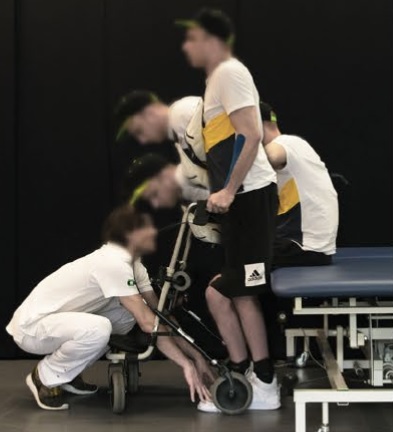 In my opinion one of the most encouraging future technologies that we are developing today is hacking the nervous system through electromagnetic recording and stimulation. Nervous system signals are ultimately electrical, which is convenient because we have an entire mature technology based on controlling the flow of electricity. We also have increasingly powerful computers and software algorithms to both read and recreate these electrical signals. The actual limiting factor with this technology at present is the hardware – the electrodes we use to interface with nervous tissue. As this technology advances, so do our applications.
In my opinion one of the most encouraging future technologies that we are developing today is hacking the nervous system through electromagnetic recording and stimulation. Nervous system signals are ultimately electrical, which is convenient because we have an entire mature technology based on controlling the flow of electricity. We also have increasingly powerful computers and software algorithms to both read and recreate these electrical signals. The actual limiting factor with this technology at present is the hardware – the electrodes we use to interface with nervous tissue. As this technology advances, so do our applications.
That is exactly the incremental advance that is now being reported, with specific reference to severe spinal cord injury. However, I think that much of the mainstream reporting is missing some important details. First let’s discuss the actual science – published in Nature is a report on three proof-of-concept cases using spinal cord stimulation to allow those with spinal cord injury to walk. This is old technology, which has been developed over the last several decades, called EES – Epidural Electrical Stimulation. So it is nothing new. The report is about a small but meaningful improvement in the hardware.
The three subjects all had spinal cord injury with complete motor and sensory loss below the level of the injury, which means essentially that they could not move or feel their legs at all. The technology implants electrodes on the dorsal roots below the injury. These are are the trunks of spinal nerves that deliver sensory information to the spinal cord. Why would you stimulate sensory nerves to make the muscles move? Because those signals get into the spinal cord (which is a physically small space) where they stimulate motor neurons. Neuroscientists have learned how to arrange these electrodes to guide these electrical signals to where they want, and keep them from spreading to motor neurons on the other side or ones they don’t want to stimulate. By taking this route they are able to stimulate a group of motor neurons that are typically involved on a motor task, like walking. If they instead stimulated the ventral motor root that would just make the entire leg contract, without having it move in a useful way.
Continue Reading »
Jan
31
2022
 The ability to detect with high accuracy if someone is lying would be extremely useful in many scenarios, but most obviously law enforcement. The idea is so alluring that we collectively just cannot give up on it, no matter how elusive the technology has turned out to be. The media typically presents the issue as a matter of lie-detection technology, and likes to hype new fancier technology as if that is going to be the path toward highly effective lie detection. I will explain below why that is likely not true, but first lets take a look at the latest such reporting.
The ability to detect with high accuracy if someone is lying would be extremely useful in many scenarios, but most obviously law enforcement. The idea is so alluring that we collectively just cannot give up on it, no matter how elusive the technology has turned out to be. The media typically presents the issue as a matter of lie-detection technology, and likes to hype new fancier technology as if that is going to be the path toward highly effective lie detection. I will explain below why that is likely not true, but first lets take a look at the latest such reporting.
A recent BBC article, True story? Lie detection systems go high-tech, is typical. They highlight a study from researchers at Tel Aviv published in December 2021 that uses electromyography to measure facial muscle movements as a telltale sign of lying. The BBC’s summary of this study is essentially that the researchers found there are two types of liars, those that move their mouth when they lie and those that move their eyebrows. Further, the research found that lie detection based on this method is “73% accurate”.
There are multiple methods for machine-enhanced lie detection. The classic lie detector is based on measuring physiological parameters, like heart rate, breathing and sweating. These are essentially measures of anxiety, and so this type of lie detector is really an anxiety detector, based on the assumption that people who are lying are more likely to be anxious than someone telling the truth. However, there are good liars who do not get anxious, and there are people who get anxious because they are being grilled, whether or not they are guilty of something. So these type of lie detectors have a high false positive and false negative rate.
Continue Reading »
Dec
14
2021
 I love the fact that three years ago no one would have any idea what the title of this post meant, and now pretty much everyone does. It’s a testament to the rapid pace of cultural change driven by digital technology. Over the last two years of the pandemic many people have become familiar with the app Zoom, which is a video conferencing app that was in the right place at the right time with the right features. There are, of course, other apps but Zoom clearly dominated the market.
I love the fact that three years ago no one would have any idea what the title of this post meant, and now pretty much everyone does. It’s a testament to the rapid pace of cultural change driven by digital technology. Over the last two years of the pandemic many people have become familiar with the app Zoom, which is a video conferencing app that was in the right place at the right time with the right features. There are, of course, other apps but Zoom clearly dominated the market.
Regardless of the app being used, video conferencing for many displaced school, lectures, work meetings, and even social gatherings. For those not already familiar with such technology it was a rapid education (Dude, you’re on mute!). Twenty-five percent of my patient visits are now over zoom, so I get to see the full spectrum of comfort with the technology, although overall it is definitely improving.
Many people, including Julie Boland who is a professor of psychology and linguistics, noticed that video conferencing can sometimes be more fatiguing than in person conversations. So she decided to research why that might be. Her initial hunch is that it might have something to do with the short delay in transmission times throwing off the natural rhythms of human conversation. Previous research had identified four contributors to Zoom fatigue – intense and slightly misaligned eye contact, being on camera, limited body movement, and lack of nonverbal communication.
As we learn to optimize the use of video conferences some of these factors are easily dealt with. For example, you can simply turn off your camera when you are not the speaker. This saves some digital throughput and energy as well, and means you don’t have to be on-camera the whole time, even when just listening. The misaligned eye-contact can be mitigated by placing the video window as close to your camera as possible, and adjusting the camera so that you are well-framed for others. Also, pure audio conversations can be just as good, and the video does not always add anything. I have been doing this for over 16 years, with five people recording a long podcast every week using just audio. You adapt.
Continue Reading »
Nov
09
2021
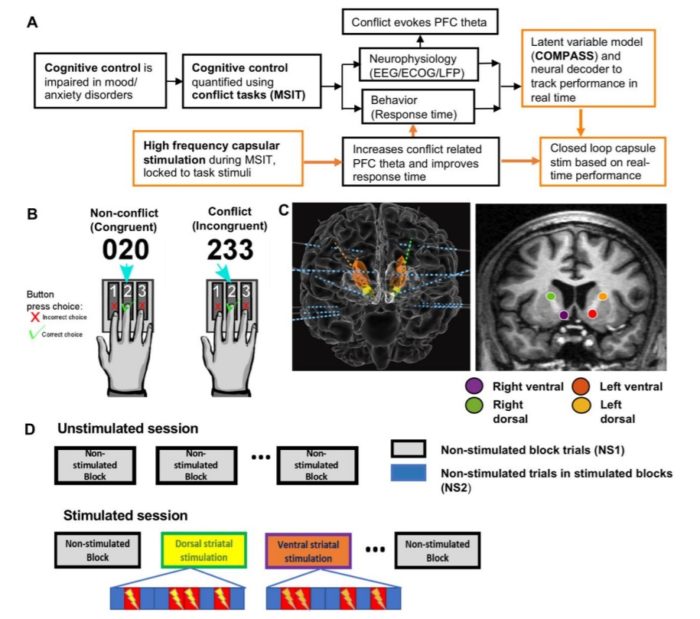 A newly published study presents a proof-of-concept for using deep brain stimulation controlled with artificial intelligence (AI) in a closed-loop system to enhance cognitive control, suggesting it might be effective for a number of mental illnesses. That’s a lot to unpack, so let’s go back to the beginning. The most fundamental necessary to understand what is going on here is that your brain is a machine. It’s a really complicated machine, but it’s a machine none-the-less, and we can alter the function of that machine by altering its physical state.
A newly published study presents a proof-of-concept for using deep brain stimulation controlled with artificial intelligence (AI) in a closed-loop system to enhance cognitive control, suggesting it might be effective for a number of mental illnesses. That’s a lot to unpack, so let’s go back to the beginning. The most fundamental necessary to understand what is going on here is that your brain is a machine. It’s a really complicated machine, but it’s a machine none-the-less, and we can alter the function of that machine by altering its physical state.
This may seem obvious, but actually people are generally psychologically biased against this view. This may, in fact, be a consequence of brain function itself, which evolved to create a seamless stream of consciousness, an illusion of self unaware of all the subconscious processes that make up brain function. This is why we tend to interpret people’s behavior in terms of personality and conscious choice, when in fact much of our behavior is a consequence of subconscious processes. We are also biased to believe that people can think or will-power their way out of mental illness.
The more we understand about how the brain functions, however, the more it becomes apparent that the brain is just a glitchy machine, and lots can go wrong. Even when functioning within healthy parameters, there are many trade-offs in brain function, with strengths often coming at the price of weaknesses. We need to look out for our own interests, for example, but this comes at the price of anxiety and paranoia. But there are some brain functions that are so basic they are almost universally useful, and impairment of them can cause of host of problems. One such basic brain function is called cognitive control, which is essentially the ability to determine what thoughts and actions will be the focus of your brain’s attention.
Continue Reading »
Oct
11
2021
 A recent BBC article discusses the emergence of products designed for neurofeedback to aid in stress reduction. The headline asks, “Smart headbands claim to make people calmer. Do they work?” However, the article does not really answer the question, or even get to the heart of the issue. It mostly provide anecdotes and opinions without putting the technology into a clear context. The article focuses mainly on the use of such devices to allegedly improve sports performance.
A recent BBC article discusses the emergence of products designed for neurofeedback to aid in stress reduction. The headline asks, “Smart headbands claim to make people calmer. Do they work?” However, the article does not really answer the question, or even get to the heart of the issue. It mostly provide anecdotes and opinions without putting the technology into a clear context. The article focuses mainly on the use of such devices to allegedly improve sports performance.
There are a few premises on which the claims made for such devices are based, varying from well established to questionable. One premise is that we can measure “stress” in the brain using an electroencephalograph (EEG) to measure the electrical activity in the brain. This claim is mostly true, but there is some important background necessary to understand what this means. First, we need to define “stress”. Functionally when researchers are talking about mental stress they mean one of two things, either the stress that results from an immediate physical threat, or the mental stress that results from engaging in a challenging mental task (like doing math in your head while being distracted). For practical purposes the research on EEGs and mental stress use the challenging mental task model.
It his, however, a good representation of stress generally? It is a convenient research paradigm, but how generalizable it is to mental stress is questionable. It can result in objective measures of physiological stress, such as secretion of stress hormones, which is partly why it’s convenient for research and not unreasonable, but it is only a representation of mental stress and might not translate to all “stressful” situations (like sports).
Can EEGs measure this type of mental stress? Yes – a relaxed mind with eyes closed produces a lot of regular alpha waves. A more active mind (and one with eyes open) produces more theta waves and chaotic brainwave activity. EEGs can therefore tell the difference between relaxed and active. How about not just active but stressed? That is trickier, but there are studies which appear to show some statistical differences in the wave patterns regionally with mental stress. So the premise that EEGs can measure certain kinds of mental stress is reasonable, but not as simple as often implied. This also does not necessarily mean that commercial devices claiming to measure EEG markers of stress work.
Continue Reading »
 Demand for electric vehicles (EVs) is increasing, but still there is lingering hesitancy to make the switch to EVs. Sales of EVs have been increasing geometrically over the last decade, with global sales reaching 6.6 million in 2021, compared to 66.7 million total vehicles sold. While this trend is encouraging, there is still a long way to go and the global warming clock is ticking. So what barriers remain to more complete adoption of EVs?
Demand for electric vehicles (EVs) is increasing, but still there is lingering hesitancy to make the switch to EVs. Sales of EVs have been increasing geometrically over the last decade, with global sales reaching 6.6 million in 2021, compared to 66.7 million total vehicles sold. While this trend is encouraging, there is still a long way to go and the global warming clock is ticking. So what barriers remain to more complete adoption of EVs?
 Having a working understanding of the biases and heuristics that our brains use to make sense of the world is critical to neuropsychological humility and metacognition. They also help use make better sense of the world, and therefore make better decisions. Here’s a fun example. Let’s say you increase your driving speed from 40 mph to 60 mph over a 100 mile journey. How much would you need to increase your speed from a starting point of 80 mph in order to save the same amount of time on the journey? Is it 100 mph or 120 mph?
Having a working understanding of the biases and heuristics that our brains use to make sense of the world is critical to neuropsychological humility and metacognition. They also help use make better sense of the world, and therefore make better decisions. Here’s a fun example. Let’s say you increase your driving speed from 40 mph to 60 mph over a 100 mile journey. How much would you need to increase your speed from a starting point of 80 mph in order to save the same amount of time on the journey? Is it 100 mph or 120 mph? The healing potential of stem cells came to the public consciousness in 2001, when president George Bush
The healing potential of stem cells came to the public consciousness in 2001, when president George Bush The dose makes the poison, so anything is potentially a poison in a high enough dose and safe in a low enough dose. But we generally refer to substances as poisons or poisonous if they cause significantly negative or dangerous biological effects at typically encountered doses. By this practical definition, alcohol is a poison. When you are tipsy or drunk what you are experiencing is alcohol’s poisonous effect on the functioning of your brain. The acute effect of alcohol is to
The dose makes the poison, so anything is potentially a poison in a high enough dose and safe in a low enough dose. But we generally refer to substances as poisons or poisonous if they cause significantly negative or dangerous biological effects at typically encountered doses. By this practical definition, alcohol is a poison. When you are tipsy or drunk what you are experiencing is alcohol’s poisonous effect on the functioning of your brain. The acute effect of alcohol is to  Think of the number 23. What just happened in your brain? You have some sense of how large a number 23 is. You are reading, so probably the first representation was the written form, and then you may have said “twenty-three” to yourself. You probably didn’t imagine exactly 23 objects laid out, but could have gotten there if you thought long enough. Perhaps you chunked it in your mind – imagining two rows of 10 followed by a row of three. You may have also thought of three weeks plus an extra weekend, or perhaps, staying on the verbal side, phrases like “23 skidoo”.
Think of the number 23. What just happened in your brain? You have some sense of how large a number 23 is. You are reading, so probably the first representation was the written form, and then you may have said “twenty-three” to yourself. You probably didn’t imagine exactly 23 objects laid out, but could have gotten there if you thought long enough. Perhaps you chunked it in your mind – imagining two rows of 10 followed by a row of three. You may have also thought of three weeks plus an extra weekend, or perhaps, staying on the verbal side, phrases like “23 skidoo”. In my opinion one of the most encouraging future technologies that we are developing today is hacking the nervous system through electromagnetic recording and stimulation. Nervous system signals are ultimately electrical, which is convenient because we have an entire mature technology based on controlling the flow of electricity. We also have increasingly powerful computers and software algorithms to both read and recreate these electrical signals. The actual limiting factor with this technology at present is the hardware – the electrodes we use to interface with nervous tissue. As this technology advances, so do our applications.
In my opinion one of the most encouraging future technologies that we are developing today is hacking the nervous system through electromagnetic recording and stimulation. Nervous system signals are ultimately electrical, which is convenient because we have an entire mature technology based on controlling the flow of electricity. We also have increasingly powerful computers and software algorithms to both read and recreate these electrical signals. The actual limiting factor with this technology at present is the hardware – the electrodes we use to interface with nervous tissue. As this technology advances, so do our applications. The ability to detect with high accuracy if someone is lying would be extremely useful in many scenarios, but most obviously law enforcement. The idea is so alluring that we collectively just cannot give up on it, no matter how elusive the technology has turned out to be. The media typically presents the issue as a matter of lie-detection technology, and likes to hype new fancier technology as if that is going to be the path toward highly effective lie detection. I will explain below why that is likely not true, but first lets take a look at the latest such reporting.
The ability to detect with high accuracy if someone is lying would be extremely useful in many scenarios, but most obviously law enforcement. The idea is so alluring that we collectively just cannot give up on it, no matter how elusive the technology has turned out to be. The media typically presents the issue as a matter of lie-detection technology, and likes to hype new fancier technology as if that is going to be the path toward highly effective lie detection. I will explain below why that is likely not true, but first lets take a look at the latest such reporting. I love the fact that three years ago no one would have any idea what the title of this post meant, and now pretty much everyone does. It’s a testament to the rapid pace of cultural change driven by digital technology. Over the last two years of the pandemic many people have become familiar with the app Zoom, which is a video conferencing app that was in the right place at the right time with the right features. There are, of course, other apps but Zoom clearly dominated the market.
I love the fact that three years ago no one would have any idea what the title of this post meant, and now pretty much everyone does. It’s a testament to the rapid pace of cultural change driven by digital technology. Over the last two years of the pandemic many people have become familiar with the app Zoom, which is a video conferencing app that was in the right place at the right time with the right features. There are, of course, other apps but Zoom clearly dominated the market. A
A  A
A 




